For as long as it’s been around, critics have been trying to put a stake through its heart. Eighteenth Century moralists fretted over the effects such salacious reading had on the minds of innocent young women, while 20th century critics found the genre trite and “pervasively conventional.” Some of the elements may seem antiquated—vulnerable ingénue, brooding aristocratic man, wild landscape, and a looming castle full of dungeons, maze-like corridors, secret passages, and locked rooms. That sense of navigating a perilous terrain finds its way into our modern landscape all too easily, though, and into the domestic, which as Patricia Murphy writes in The New Woman Gothic, “should be associated with security and serenity but is instead configured into one that poses perpetual peril.” Here’s a lamplit tour of the founding novels of the genre and a few of their modern spawn.
__________________________________
The Originals
__________________________________
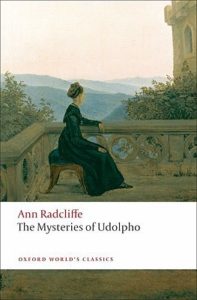
The Mysteries of Udolpho by Ann Radcliffe sets the creaky stage. Innocent but resourceful Emily St. Aubert is trapped by brooding, aristocratic Montoni in the remote castle of Udolpho. Upon entering her new chamber she discovers a door that leads to a steep narrow staircase that can’t be locked and feels some alarm “at sleeping in this remote room alone, with a door opening she knew not wither.” Wither, indeed, Emily!

It didn’t take long for a clever young woman to satirize the overwrought Gothic heroine. Jane Austen’s Catherine Moreland is an avid reader of the Gothic and it’s made her susceptible to all sorts of suspicions when she visits Northanger Abbey. While Catherine learns to look at things more clearly than a Gothic heroine, her curiosity does uncover secrets at the heart of the Tilney family. Domestic drama may be lurking in our houses even when there aren’t bodies hidden in the basement.
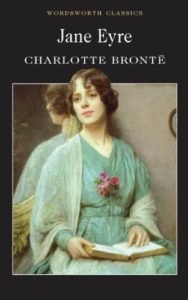
Checking the attic might be where the titular heroine of Jane Eyre should start. Brooding Rochester is certainly keeping something secret up there. As modern critics have suggested, the madwoman in the attic may be a reflection of Jane’s repressed sexuality and rage. Who hasn’t felt a little cramped by their household chores? Bronte’s solution may be a little incendiary, but she’s not the only woman who’s had a love/hate relationship with a house.

Rebecca opens with an ode to one: “Last night I dreamt I went to Manderley again.” The second (unnamed) Mrs. de Winter may seem to have won the lottery when handsome Max de Winter sweeps her out of a dreary job and takes her to his mansion on the Cornish coast, but the luxe accommodations come with a snarky housekeeper and the looming shadow of the dead first wife. And then there’s all those domestic arrangements the new wife is supposed to effortlessly slip into. Letter writing in the morning room is so stressful that when she breaks a knick-knack she guiltily hides it in a drawer. What’s a girl supposed to do when the house-work is so overwhelming and the “help” aren’t helping at all? Take a page from the madwoman in the attic, perhaps, and take up hotel-living.
__________________________________
The Modern Classics
__________________________________

Being forced into a “Suburban Nouveau Riche” Missouri house sends Amy on a wild tailspin in Gone Girl. Sure, there’s her husband’s affair, too, but she saves her most withering critique—“Should I remove my soul before I come inside”—for the house. Later Amy will find herself trapped in another nouveau riche house: “We modeled it after this wonderful little chalet my mother and I stayed at in Brienzersee,” her clingy captor Desi tells her. He might as well welcome her to the Castle of Udolpho.

In Ruth Ware’s The Woman in Cabin 10 a luxury cruise ship serves as the locus of terror and anxiety. Already traumatized by a home break-in, Lo Blackwood feels violated when she realizes that her cabin can be accessed by staff: “… someone had been inside my room, messing with my things, touching my things, touching my wrinkled tights and my half-used eyeliner pencil. Why did the thought make me want to cry?” After she hears a body-sized splash in the night and sees blood on the divider between her terrace and her neighbor’s, she becomes panicked at the fact she can’t lock her terrace door. “My room was not safe,” she realizes, “and never had been.”
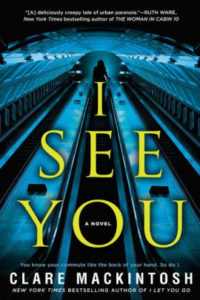
It’s this sense of personal invasion that pervades Clare Mackintosh’s I See You. Zoe Walker’s private space is invaded, not in a Gothic castle, but on the London Underground, which makes her “feel uneasy; unable to breathe …” and where manspreading only adds to her sense of being hemmed in: “The man sitting next to me has his legs so wide apart I have to angle mine away.” Soon her personal space is compromised even further when she sees her own picture in an online dating ad.
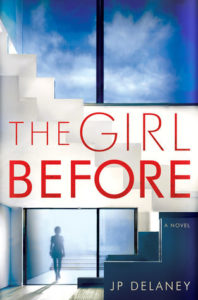
While the Gothic heroine only had to worry about locking her doors, the modern heroine has to worry about being hacked. In J.P. Delaney’s The Girl Before Jane, and Emma before her, find themselves in a seemingly perfect London townhouse with remarkably low rent—as long as they’re willing to abide by “the rules.” The house is a marvel of techno-minimalist gadgetry where “one app controls everything.” At first the house inspires a sense of security for Emma. But although the house feels cut off, it’s actually completely connected. The home wireless (called “Housekeeper”—shades of Mrs. Danvers!) monitors its inhabitants’ behavior and vital signs, delivering regular “metrics” that detail weight loss or gain, stress levels, alcohol consumption, body temperature, sleeping habits, and cleanliness. “This is the future, Jane,” the architect Monkforth explains. “Health and well being monitored by your domestic environment.” To Emma he asks, “As architects why should we stop at our buildings’ walls?”

Why indeed? The modern psychological suspense novelist doesn’t stop at physical walls to convey a sense of being confined and imperiled. In Long Black Veil, Jennifer Finney Boylan employs the trappings of Gothic horror—an abandoned prison, mysteriously locked—to tell a powerful original story of what it’s like to be trapped in the wrong gender, a prison just as life-threatening as any medieval castle.
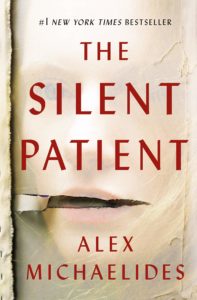
The body as prison is also masterfully evoked in Alex Michaelides’ The Silent Patient. Here the physical setting, a mental hospital, offers dubious protection for the mysterious Alicia Berenson, who hasn’t spoken a word since she brutally killed her husband. As forensic psychotherapist, Theo Faber, attempts to unravel her story he finds his own boundaries are broached. “You’re in deep with Alicia,” his mentor Diomedes tells him, “and your feelings are bound up with hers like a tangled ball of wool.” Just how entangled he is comes out in the end.

Although a burned house, another mental hospital, and a mysterious door lurk in the background of Behind Her Eyes by Sarah Pinborough, it’s the enclosure of marriage and a love triangle that form the boundaries here. As single-mom Louise tries to plumb the secrets of David and Adele’s marriage she’s drawn into a different kind of locked-room mystery and imperiled by a threat that recognizes no physical limits. When even our own minds aren’t safe from invasion, what’s the use of locking our doors?
***
Patricia Murphy writes in The New Woman Gothic that the Gothic arises in periods of cultural anxiety. Is it any wonder, then, in these days when Google mines our emails for our shopping habits, my phone knows how far I’ve walked today, and the Russians hack our elections, that our psychological thrillers are rife with cyber invasion? We may lock our doors, but we’re never truly alone. The modern predator can find us in cyber-space. Our personal information, our loved ones, our very identities are now open to invasion—a cyber door opening we know not whither.

















